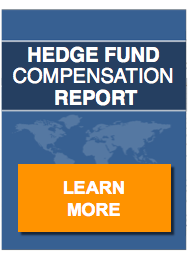As we know, investment in the alternative asset class is expected to increase as much as 40 percent by 2023. Consequently, the competition for investor dollars is certain to heat up between hedge funds and private equity, the top two alternative investment options. Prequin reports the total value of alternative assets at $8.8 trillion at the close of 2017. Hedge funds presently account for $3.61 trillion, giving hedge funds a modest lead over their private equity rivals, currently holding $3.1 trillion in assets under management.
Ernst & Young’s Survey
This survey, published in November 2017, suggested that 40 percent of those invested in hedge funds planned to shift into other alternative assets. North American investors were substantially less enthusiastic, with just 25 percent reporting that they would reduce hedge fund allocations. That said, it is clear that over the next 4 years, the hedge fund industry is going to be in a heated contest with other alternative investment vehicles, particularly private equity, for investor dollars.
What Can Hedge Fund Managers Do?
Investors, according to the survey, are keen on innovation, particularly front office (investing/trading) and operational efficiency innovation. Consequently, it would behoove hedge fund firms to evaluate front office and operational deficiencies in the context of investing, trading, and operations.
Upgrading and/or initiating software solutions, such as artificial intelligence and exploring the possibility of outsourcing, to enhance operational efficiency, are two examples of innovation that may be considered.
Is that It?
Of course not! Innovation also includes the development of new and exciting investment strategies, and beyond strategies, innovation means finding unique, non-traditional investments. Being innovative, also means delivering performance gains. Let’s be honest, hedge fund performance on average, has been unimpressive. In this environment, it is not unrealistic to regard great performance as innovative.
In the End
When it is all said and done, the keys to retaining investors are listening to their needs, fulfilling those needs, and making your fund attractive to new investors.
An additional $5 trillion dollars will be invested in alternative assets by 2023. How much of this is captured by the hedge fund industry will largely depend upon meeting the needs of potential investors.
The Ernst & Young survey provides an excellent example of hedge funds doing just that. Separately managed accounts (SMAs) were something that investors wanted⸺hedge funds responded, and, as a result, the survey shows, of the funds that offer SMAs, about 25 percent of their assets under management reside in these accounts.
Hedge Fund Needs vs Investor Desires
Regrettably, there is not always a nexus between investor concerns and hedge fund manager concerns. One example of this failed nexus is talent retention. The survey shows that less than 3 percent of investors expressed concern on this front. However, 52 percent of small (under $5 billion) firm managers , report the need to hire from outside to fill many leadership positions.
Final Thoughts
Small hedge funds, increasingly, will find themselves at a competitive disadvantage as investors demand greater investment in front office technology. Moreover, investors continue to exert pressure on hedge funds to lower management and performance fees.
In most instances, small funds have limited funds available for expensive technological offerings and this fact, coupled with the small fund’s limited flexibility to negotiate fees, poses a tremendous challenge going forward.


